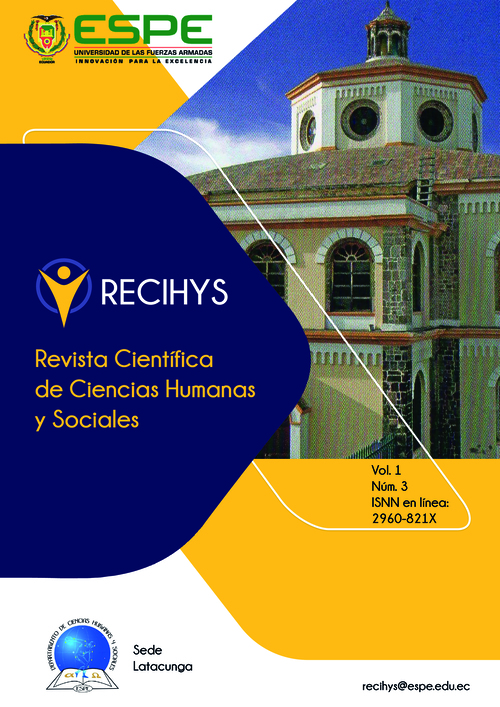Diagnosis of work stress in teachers in times of pandemic and its theoretical implications of work recreationTitle of the article in English
Main Article Content
Abstract
Stress is a problem that affects people in general, added to this the presence of the COVID 19 pandemic, increased stress levels due to the new virtual work modality adopted by society, this modality was essential to continue with work activities; Given this reality, various studies confirm the benefits of recreation to counteract the effects of stress. Based on the above, the research work that sought to diagnose the levels of work stress in teachers in times of pandemic and theoretical implications in relation to work recreation is presented. The research was developed in accordance with the guidelines, documentary, field design, the methods used were analytical, synthetic and empirical. The study population consisted of 80 teachers, 48 women and 32 men. The data collection instrument used was the standardized Maslach test (MBI). The most important finding is in relation to the emotional fatigue dimension where in the pretest, 81% of women and 78% of men presented exhaustion or high emotional exhaustion. From these preliminary results it is evident that burnout syndrome problems exist. Based on these considerations and as a result of the documentary review, it is concluded that there are benefits of recreation that allow us to counteract the effects of stress.
Downloads
Article Details

This work is licensed under a Creative Commons Attribution 4.0 International License.
Authors who publish in this journal agree to the following terms: Authors retain the copyright and guarantee the journal the right to be the first publication of the work, as well as, licensed under a Creative Commons Attribution License that allows others share the work with an acknowledgment of the authorship of the work and the initial publication in this journal. Authors may separately establish additional agreements for the non-exclusive distribution of the version of the work published in the journal (for example, placing it in an institutional repository or publishing it in a book), with acknowledgment of its initial publication in this journal. Authors are allowed and encouraged to disseminate their work electronically (for example, in institutional repositories or on their own website) before and during the submission process, as it may lead to productive exchanges as well as further citation earliest and oldest of published works.
How to Cite
References
Andino-Jumbo, J. E., & Mateo-Sánchez, J. L. (2021). Estrategia de intervención física y recreativa como atenuante al estrés en docentes. Revista científica especializada en Ciencias de la Cultura Física y del Deporte, 18(50), 17-31.
Arias, F. (2012). EL-PROYECTO-DE-INVESTIGACIÓN-6ta-Ed.-FIDIAS-G.-ARIAS.pdf (sexta). Episteme. https://ebevidencia.com/wp-content/uploads/2014/12/EL-PROYECTO-DE-INVESTIGACI%C3%93N-6ta-Ed.-FIDIAS-G.-ARIAS.pdf
Bernal, C. (2010). Metodología de la investigación administración, economía, humanidades y ciencias sociales (Tercera). Prentice Hall. https://www.academia.edu/44228601/Metodologia_De_La_Investigaci%C3%B3n_Bernal_4ta_edicion
Gómez. (2012). Metodologia_de_la_investigacion.pdf. TERCER MILENIO S.A. http://www.aliat.org.mx/BibliotecasDigitales/Axiologicas/Metodologia_de_la_investigacion.pdf
Hernández, Fernández, & Baptista. (2014). Metodología de la Investigación (´Sexta). McGraw-Hill : Interamericana. https://academia.utp.edu.co/grupobasicoclinicayaplicadas/files/2013/06/Metodolog%C3%ADa-de-la-Investigaci%C3%B3n.pdf
Guzmán, L. R., & Viera, A. O. (2020). Fuentes de estrés en académicos mexicanos de nivel superior. Revista Cubana de Salud y Trabajo, 22(1), 31-39.
Osorio, J.E. & Cárdenas, L. (2017). Estrés laboral: estudio de revisión. Diversidad: Perspectivas Psicológicas, Medellín, 13(1); 81-90. Recuperado de: http://dx.doi.org/10.15332/s1794-9998.2017.0001.06
Sánchez, M. (2014) Las actividades recreativas: sus características, clasificación y beneficios. Revista Digital. EFDeportes. Buenos Aires Año 19, n 196. https://www.efdeportes.com/efd196/las-actividades-recreativas-clasificacion.htm
Oramas Viera, Arlene, Almirall Hernández, Pedro, & Fernández, Ivis. (2007). Estrés Laboral y el Síndrome de Burnout en Docentes Venezolanos. Salud de los Trabajadores, 15(2), 71-87. Recuperado en 19 de septiembre de 2021, de http://ve.scielo.org/scielo.php?script=sci_arttext&pid=S1315-01382007000200002&lng=es&tlng=pt
García-Rodríguez, A., Gutiérrez-Bedmar, M., Bellón-Saameño, J., Muñoz-Bravo, C., y Fernández-Crehuet, J. (2015). Entorno psicosocial y estrés en trabajadores sanitarios de la sanidad pública: diferencias entre atención primaria y hospitalaria. Atención Primaria, 47(6), 359-366. Recuperado de: https://doi.org/10.1016/j.aprim.2014.09.003
Longas, J., Chamarro, A., Riera, J., & Cladellas, R. (2012). La Incidencia del Contexto Interno Docente en la Aparición del Síndrome del Quemado por el Trabajo en Profesionales de la Enseñanza. Revista de Psicología del Trabajo y de las Organizaciones, 28(2), 107-118. https://doi.org/10.5093/tr2012a9
Colina, D. M. (s. f.). Recreación laboral: Su efecto motivacional en los trabajadores. 16.
Maslow, A. (1975), Motivación y Personalidad, Sagitario, Barcelona. https://www.redalyc.org/pdf/305/30517306006.pdf
Naranjo Pereira, M. L. (2009). Una revisión teórica sobre el estrés y algunos aspectos relevantes de éste en el ámbito educativo. Revista Educación 33(2), 171-190-42, ISSN: 0379-7082. https://www.redalyc.org/pdf/440/44012058011.pdf
Cardozo, L. (2016). El estrés en el profesorado. Revista de investigación Psicológica, 15(2), 76. Recuperado de: http://www.scielo.org.bo/scielo.php?script=sci_arttext&pid=S2223-30322016000100006&lng=es&tlng=es
Cuba, R. (2019). ESTRÉS LABORAL EN DOCENTES DE EDUCACIÓN SECUNDARIA DEL DISTRITO DE MAZAMARI – SATIPO. 130.
Jiménez, Y., Nuñez, M., & Coto Vega, E. (2013). La actividad física para el adulto mayor en el medio natural. InterSedes, 14(27). https://doi.org/10.15517/isucr.v14i27.10413

